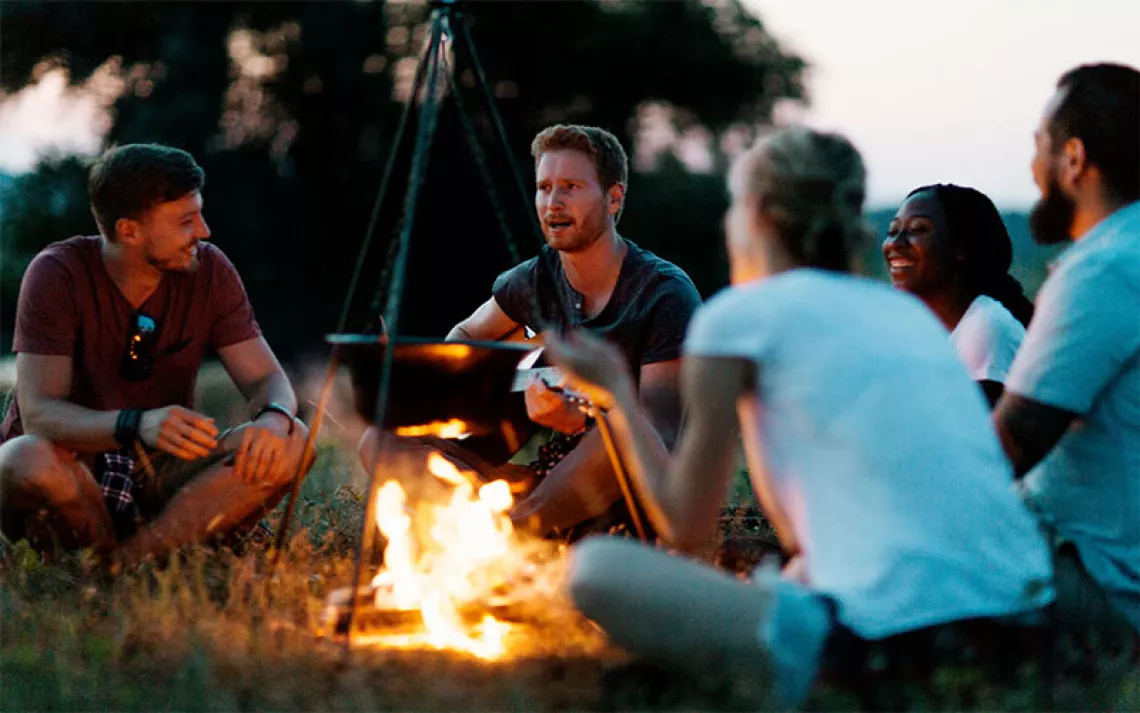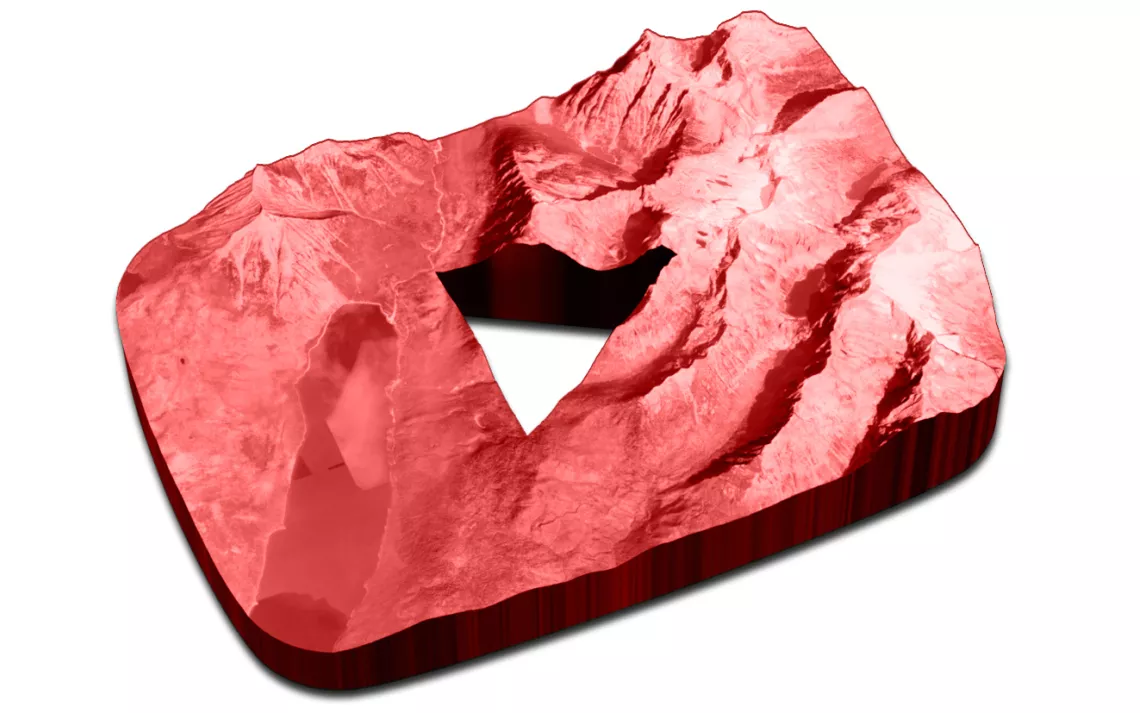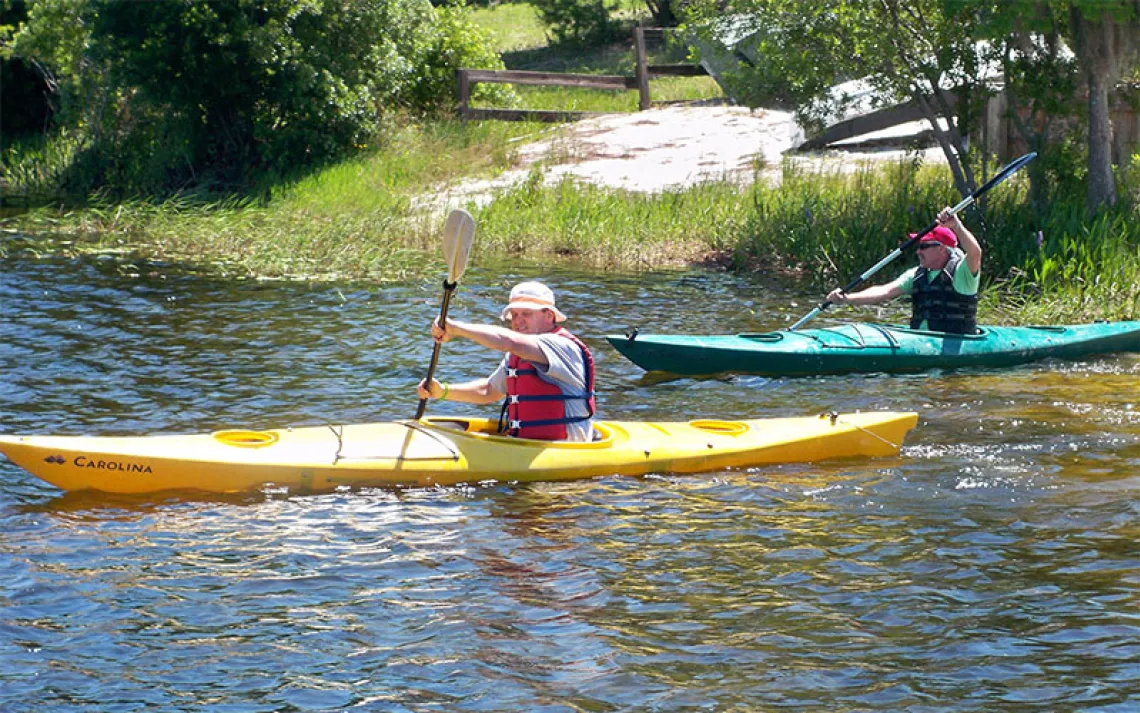#MeToo Moments in the Outdoors
We must ensure that everyone feels safe in nature
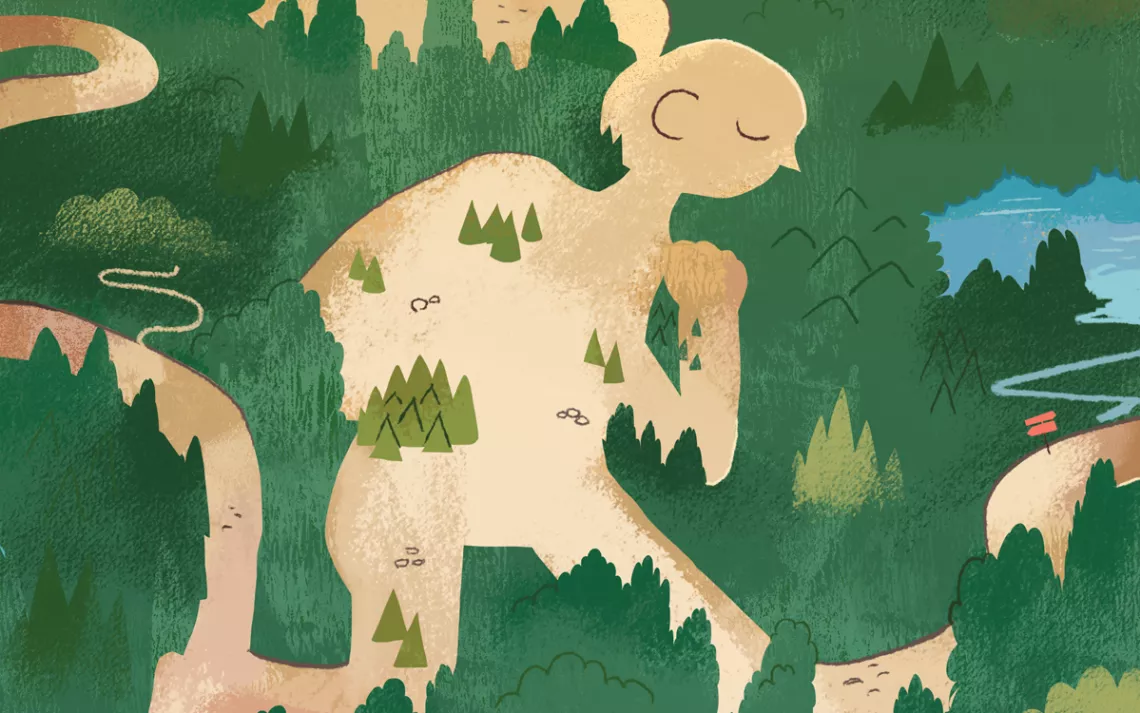
Illustration by Aleks Sennwald
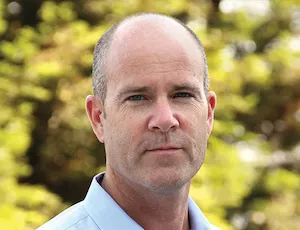
Given all the singular events of 2017, which one will future generations view as a real watershed moment for our society? My guess is that, although related, it won't be the inauguration of President Donald Trump. I think what we'll remember will be the #MeToo movement, which has finally started to bring (some) accountability to (some) powerful men in (mostly) the entertainment industry, the media, and the government. But as important as that movement has been, the stories in the news only begin to encompass the problems of sexual harassment, assault, and rape. While the outdoors should be a refuge from this kind of abuse, the sad reality is that it isn't.
Not even Grand Canyon National Park is immune. In early 2016, after 13 people took their sexual-harassment claims directly to then–interior secretary Sally Jewell, the Office of Inspector General issued a report on the park's River District unit. The report documented a 15-year history of male river guides groping, assaulting, and even withholding food from female colleagues on river trips. When some of the women had complained, the responses had ranged from indifference to retaliation. The situation was so bad that a few months after the report came out, the National Park Service deemed it more practical to shut down the unit than to try to fix it.
What happened in the Grand Canyon is neither unique nor unusual. Also in 2016, the superintendent of Yosemite National Park announced his retirement after allegations of a hostile work environment for women and others. But it wasn't until the end of last year, when the Interior Department released results of a survey of NPS employees, that the full extent of the problem in our parks was made horribly clear: Of the roughly 28,000 staffers who responded, 8 percent said they had been sexually harassed, and 37 percent said they had been victims of some form of harassment or intimidation based on their age or gender. Among those employees who had witnessed harassment and reported it, about 40 percent said that the person they had told had either taken no action or encouraged them to drop the issue.
Interior Secretary Ryan Zinke says that he has fired four employees accused of harassment and that he is committed to doing whatever it takes to change the department's culture from the top down. I don't agree with Zinke on a lot of issues, but I sure hope he takes this commitment seriously.
It's not just women working in the outdoors who face harassment there. When Outside magazine polled women on its website last year, more than half of those who responded said that they had been sexually harassed while recreating outdoors. Does that ever happen during any of the Sierra Club's thousands of outings? It would be both naive and irresponsible to assume it doesn't.
It should go without saying that the Sierra Club has zero tolerance for harassment of any kind among our thousands of staff, volunteers, and outing participants. But if anything has become clear during the past year, it's that official policies are not an end solution—they are merely a starting point. To eliminate harassment will require confronting and rejecting the toxic culture that tolerates and encourages violence against women.
Is this an environmental issue? Absolutely—and, in its way, it's as important as any other issue we face. The Sierra Club's mission is to help everyone explore, enjoy, and protect the natural world. We can never fully reach that goal until everyone knows they are safe and welcome in the places we want to protect.
Photo by Henrik Kam
 The Magazine of The Sierra Club
The Magazine of The Sierra Club

